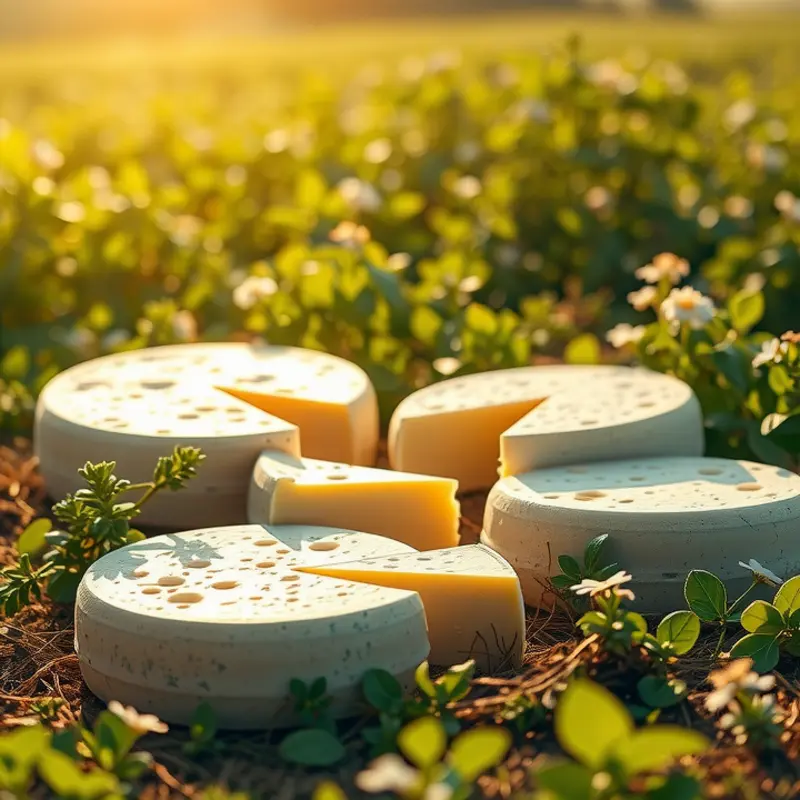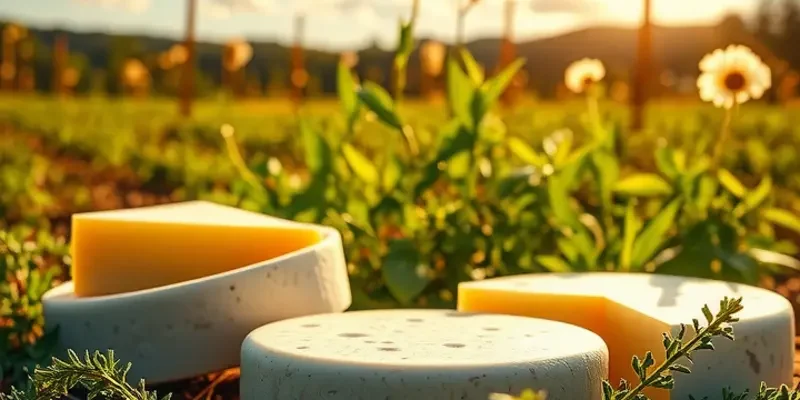Cheese is a delightful addition to many meals, but its shelf life can vary significantly depending on the type. Learning how to store cheese properly not only maximizes its longevity but also helps reduce food waste. A few simple adjustments in the way you store cheese can maintain its flavor and texture while ensuring it doesn’t spoil quickly. Let’s dive into practical methods that will help you keep your cheese fresh longer.
Understanding Cheese Varieties and Their Storage Needs

When it comes to cheese, each type requires a unique approach to storage. This careful attention ensures you maintain the best texture and flavor. Let’s explore how soft, semi-soft, hard, and blue cheeses each have their specific storage needs.
Soft cheeses, such as Brie and Camembert, are high in moisture and prone to spoilage. To keep their creamy texture and flavor, store them in the refrigerator at 40°F (4°C). Remove the cheese from any plastic packaging and wrap it in wax paper, followed by loose aluminum foil. This method prevents excessive moisture retention while allowing the cheese to breathe, inhibiting unwanted mold growth.
Semi-soft cheeses like Gouda and Havarti are less moist than soft cheeses. They require a more breathable wrap. A layer of parchment paper along with a loose outer layer of plastic wrap or a cheese bag will suffice. Keep these cheeses refrigerated in the vegetable crisper drawer, where humidity levels are ideal for preventing cracking while prolonging shelf life.
Hard cheeses, such as Parmesan and Cheddar, benefit from a more rigid structure, allowing for longer storage times. These cheeses can be wrapped in parchment paper and then sealed in a cardboard box if needed. Stored in the refrigerator, they last for several weeks. If you notice hard cheese starting to dry, grating and freezing it in airtight containers can extend its use further without compromising flavor.
Blue cheeses, like Roquefort and Gorgonzola, are distinct for their mold veins and robust flavors. To maximize their shelf life while maintaining texture, wrap these cheeses in foil. This wrap helps contain the high humidity necessary for their mold veins to stay alive and maintain that signature bite. Store blue cheese in the fridge, and if you find you can’t finish it within a few weeks, cut off any spoiled edges, and the rest should remain fresh.
Regardless of the cheese type, avoid wrapping directly in plastic for extended periods. This can trap moisture, promoting bacteria growth, and affect texture.
For further tips on reducing waste in your kitchen storage practices, consider exploring eco-smart kitchen storage solutions. It’s essential to understand proper storage to preserve both the quality of cheese and our environment.
By understanding these differences across cheese types, you’ll ensure your cheese lasts longer while tasting its best, integrating a strategy that can enhance your culinary experience and reduce kitchen waste.
Practical Tips for Properly Storing Cheese

To maximize the shelf life of cheese, understanding practical storage techniques is essential. Start by considering the cheese type you are storing. Each type has unique needs that influence how you should wrap and store it.
Wrapping Techniques: Using the correct wrapping technique is crucial for maintaining cheese quality. Avoid using plastic wrap, as it can suffocate cheese, trapping moisture and causing spoilage. Instead, opt for cheese paper or parchment paper. These materials allow the cheese to breathe, preventing excess moisture build-up.
For hard cheeses, double-wrap them in cheese paper and secure the edges with tape. This approach keeps the cheese fresh while allowing it to breathe. Soft cheeses, like Brie, benefit from a looser wrap. This method ensures they don’t become too moist or dry out.
Ideal Temperature Settings: The right temperature setting is another critical factor. Cheese thrives in a cool environment, ideally between 35°F and 45°F (1.7°C and 7.2°C). Many modern refrigerators have specialty drawers to maintain this range, which is perfect for cheese. If your fridge lacks one, store cheese on the lower shelves, where it’s usually colder.
Moisture control is equally vital. The refrigerator’s humidity level can significantly affect cheese quality. If possible, use a humidity-controlled drawer, set to medium humidity, to store cheese. If this isn’t an option, a small kitchen thermometer can help monitor conditions and make necessary adjustments.
Containers and Drawer Use: Place cheeses in the vegetable crisper drawer to achieve the best balance of humidity and temperature. There, they sit away from strongly odoriferous items, reducing the risk of flavor contamination.
Using proper containers can also extend cheese life. Airtight containers work well for soft cheeses, which need to retain some moisture. Hard cheeses, on the other hand, prefer containers that allow for slight air passage, mitigating moisture build-up.
Avoiding Cross-contamination: Preventing cross-contamination is essential for cheese longevity. Segregate strong-smelling cheeses like blue cheese from milder varieties such as mozzarella. Using separate drawers can help. The use of dedicated cheese knives and boards is also beneficial, preventing flavors from mingling unintentionally.
Additional Considerations: Mold is common on cheese but isn’t always harmful. For hard cheeses, just cut away moldy areas about an inch around and beneath the mold. However, if soft cheeses develop mold, it’s safer to discard them.
Finally, consider integrating sustainable practices into your cheese storage routine. Implement low-waste techniques like using reusable wraps and biodegradable containers, which you can find more about in articles on eco-smart kitchen storage.
Mastering these practical cheese storage tips ensures that you can savor your favorite cheeses longer, maintaining their flavor and texture while reducing waste.
Final words
Storing cheese doesn’t need to be complicated. By understanding the various types of cheese you own and implementing the right storage techniques, you can significantly extend their shelf life while improving your overall food management at home. Remember to keep cheeses wrapped appropriately and stored in the right environments to minimize waste. With these tips in your toolkit, enjoy your cheese selection for longer periods, savoring every delicious bite.







